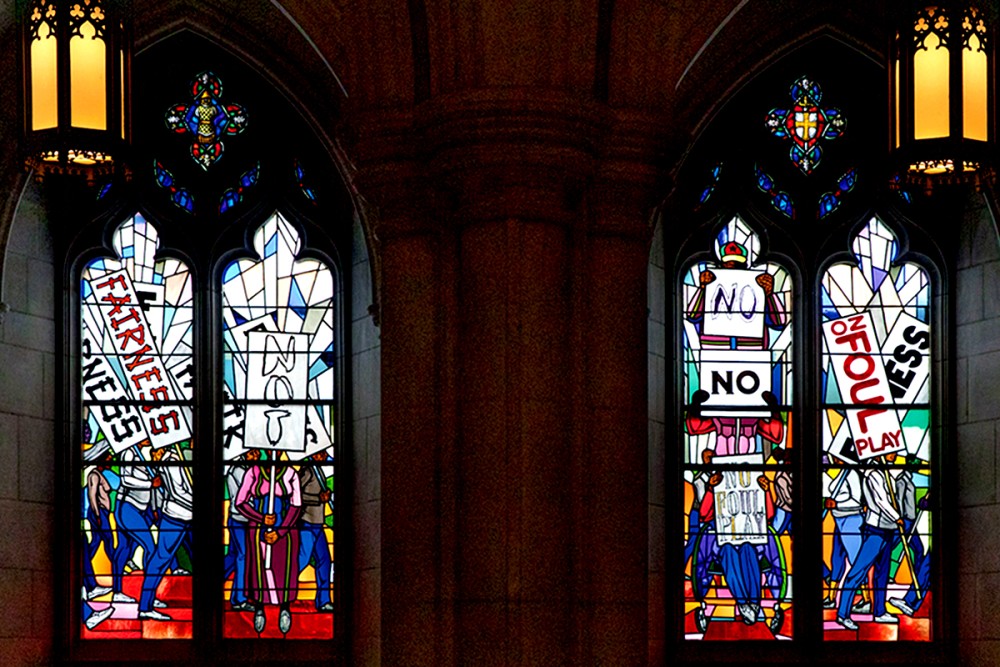New National Cathedral windows focus on racial justice

The new windows, dedicated on September 23, replace window honoring two Confederate generals that were removed in 2017. (Photo courtesy of the Washington National Cathedral)
Washington National Cathedral on September 23 unveiled and dedicated a new set of stained-glass windows with a racial justice theme, called the Now and Forever Windows, that feature people engaged in a march bearing signs calling for “Fairness” and “No Foul Play.”
The windows replace the cathedral’s former windows honoring Confederate generals Robert E. Lee and Stonewall Jackson, which were removed in 2017.
During the dedication service, available on video, Randy Hollerith, the cathedral’s dean, said the Confederate windows “were offensive, and they were a barrier to the ministry of this cathedral. And they were antithetical to our call to be a house of prayer for all people.”





